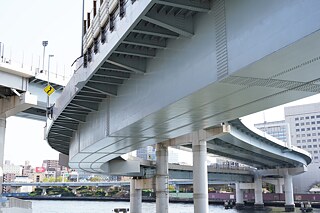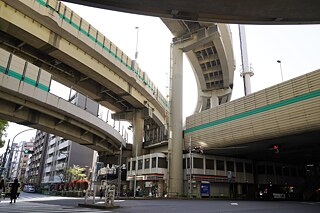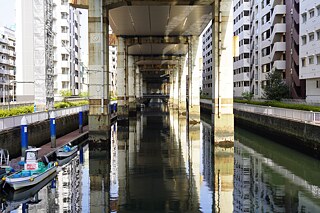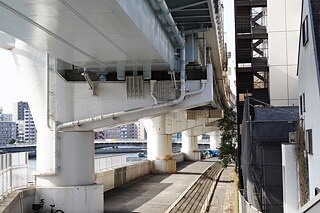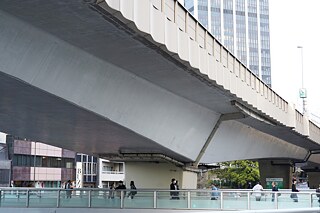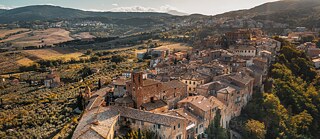Photo reportage Tokyo’s expressway network
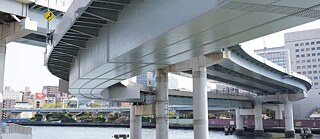
Tokyo’s city motorway was the first Metropolitan Expressway in the world. Today it’s part of a dense network of highways extending throughout the metropolitan region – in which there are 40 million inhabitants. In this photo documentary article, Yu Minobe brings you some contemporary impressions of this road network and explains its history.
Three-quarters of Tokyo’s motorway complex, which has a total length of 327 kilometres, consists of elevated sections supported on massive concrete pillars snaking scenically amongst apartment blocks, skyscrapers and factories – winding their way above the earth like the arteries of water underground.Plans for a capital city motorway in Tokyo date back as far as the late 19th century. The need for such a transport infrastructure to serve the rapidly growing city was identified right at the start of Japan’s modernisation and westernisation. Finally in the late 1950s, just 15 years after the end of the Second World War, building a motorway became inevitable. Motorisation and the increasing population density had caused huge traffic problems on the roads. Confirmation that they would host the Olympic Games in 1964 gave the project a crucial boost, and thus construction work on the world’s first “Metropolitan Expressway” began. Not only would it improve the traffic situation in the capital, it would also function as a hub for a national motorway network linking the capital with other regions of the country in economic terms.
The Rivers and Canals
Construction of the motorway needed to happen quickly – Japan only had five years to present their post-war rehabilitation and the country’s economic upturn to a global audience. However, the first and biggest obstacle to building the motorway was acquiring the land, which often involved protests and years of negotiations. To make this easier, the state reclaimed the city’s existing “arteries” – the rivers and canals. The delta at the end of the Kanto Plain in the water city, once its vital arteries, was quickly concreted over to create space for the new roads. The sewer infrastructure was already overwhelmed due to the rapid population growth, and the pungent smell of the waterways had already been keeping people away from them before construction started. As a result the state managed to cover up the rivers, dry out the beds and build roads on stilts over existing rivers without great resistance.The Metropolitan Expressway was also an expression of the zeitgeist: the dream of infinite growth, higher, faster and further. People were only looking ahead and upwards, while they tried to ignore the dark past, concealed like geological strata and the watercourses beneath the city. Japan’s war crimes, the colonisation of neighbouring nations in the name of liberation, or the fact that war criminals were tolerated in the highest ranks of government after the war – all those things were buried underground as though they didn’t exist.
A radiant Future
The intention was for the new Japan to flourish economically and lead humanity towards a radiant future. It was the era of progress, of technology. And thus the city grew, and with it the motorway complex, which reached its peak in the 1990s with a possible record 1.1 million cars.The 2020 Olympic Games – postponed because of the pandemic and held behind closed doors amid fierce protest – were supposed to be a new version of the 1964 games, which had heralded a new era for Japan. At the same time they were meant to mark a turning point on the path towards becoming a more sustainable water city. For this, the urban districts surrounding the bay were extensively gentrified with construction of apartments and shopping malls. It remains to be seen whether this city development will turn out to be sustainable.
A Fallacy
One thing’s already certain though: the dream of infinite growth was a fallacy. This became clear in the worst possible way by 2011 at the latest, when an accident at the nuclear power station in the coastal region of Fukushima – which produced power exclusively for Tokyo – destroyed the homes and livelihoods of tens of thousands of residents outside Tokyo.Today around 30 per cent of the 327 kilometres of motorway is more than 50 years old. The expressway is corroded, cracks can be seen everywhere. But ironically the very same dilapidated highways that came into being 60 years ago during the manic growth phase to cover up the past now symbolically reveal the ruins of failed dreams – like the historical arteries of water winding their way across the city.
